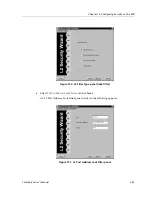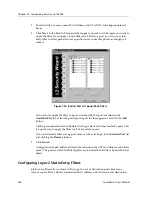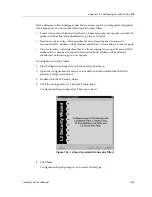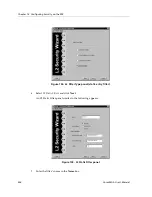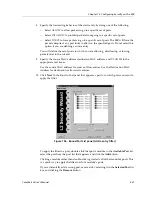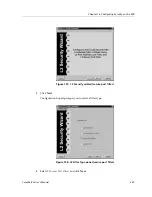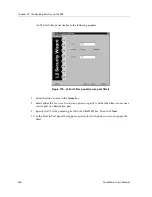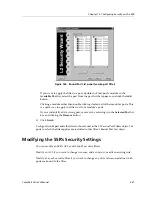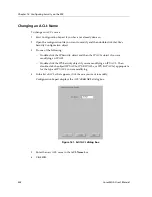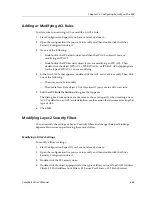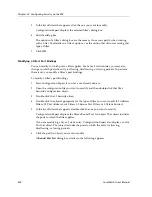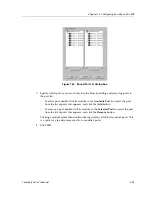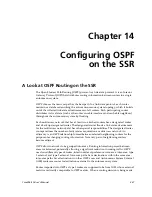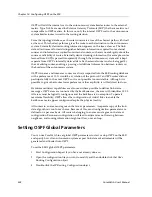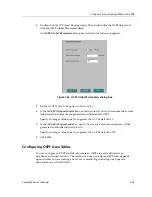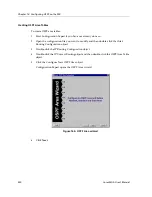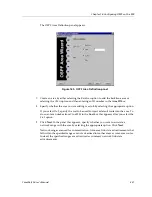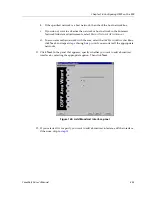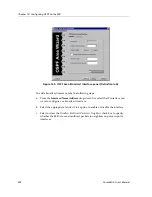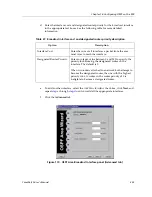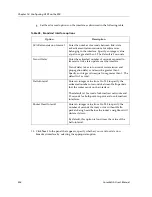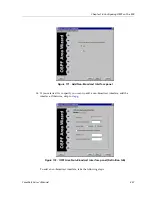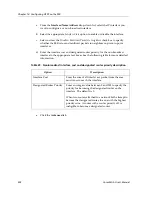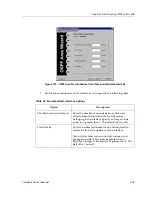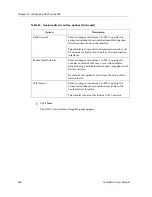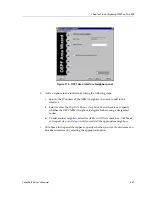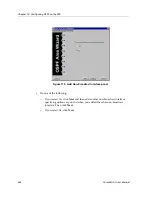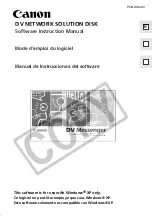
CoreWatch User’s Manual
247
Chapter 14
Configuring OSPF
on the SSR
A Look at OSPF Routing on the SSR
The Open Shortest Path Routing (OSPF) protocol is a link-state protocol. It is an Interior
Gateway Protocol (IGP) that distributes routing information between routers in a single
autonomous system.
OSPF chooses the least cost path as the best path. In a link-state protocol, each router
maintains a database describing the entire autonomous-system topology, which it builds
out of the collected link-state advertisements of all routers. Each participating router
distributes its local state (such as the router's usable interfaces and reachable neighbors)
throughout the autonomous system by flooding.
Each multiaccess network that has at least two attached routers has a designated router
and a backup designated router. The designated router floods a link state advertisement
for the multiaccess network and has other special responsibilities. The designated router
concept reduces the number of adjacencies required on a multiaccess network. An
adjacency is an OSPF relationship formed between selected neighboring routers for the
purpose of exchanging routing information. Not every pair of neighboring routers
become adjacent.
OSPF allows networks to be grouped into areas. Routing information passed between
areas is abstracted, potentially allowing a significant reduction in routing traffic. OSPF
uses four different types of routes, listed in order of preference: intra-area, inter-area, type
1 external, and type 2 external. Intra-area paths have destinations within the same area,
inter-area paths have destinations in other OSPF areas and Autonomous System External
(ASE) routes are routes to destinations external to the autonomous system.
Routes imported into OSPF as type 1 routes are supposed to be from IGPs whose external
metrics are directly comparable to OSPF metrics. When a routing decision is being made,
Summary of Contents for CoreWatch
Page 1: ...CoreWatch User s Manual 9032564 04...
Page 2: ...Notice 2 CoreWatch User s Manual...
Page 20: ...Preface 20 CoreWatch User s Manual...
Page 64: ...Chapter 5 Changing System Settings 64 CoreWatch User s Manual...
Page 86: ...Chapter 6 Configuring SSR Bridging 86 CoreWatch User s Manual...
Page 106: ...Chapter 7 Configuring VLANs on the SSR 106 CoreWatch User s Manual...
Page 206: ...Chapter 12 Configuring QoS on the SSR 206 CoreWatch User s Manual...
Page 246: ...Chapter 13 Configuring Security on the SSR 246 CoreWatch User s Manual...
Page 363: ...CoreWatch User s Manual 363 Chapter 16 Configuring Routing Policies on the SSR 9 Click OK...
Page 364: ...Chapter 16 Configuring Routing Policies on the SSR 364 CoreWatch User s Manual...
Page 370: ...Chapter 17 Checking System Status 370 CoreWatch User s Manual...
Page 390: ...Chapter 18 Monitoring Real Time Performance 390 CoreWatch User s Manual...
Page 396: ...Chapter 19 Checking the Status of Bridge Tables 396 CoreWatch User s Manual...
Page 430: ...Chapter 20 Checking the Status of Routing Tables 430 CoreWatch User s Manual...
Page 442: ...Chapter 22 Obtaining Reports 442 CoreWatch User s Manual...
Page 456: ...Appendix B CoreWatch Menus 456 CoreWatch User s Manual...

